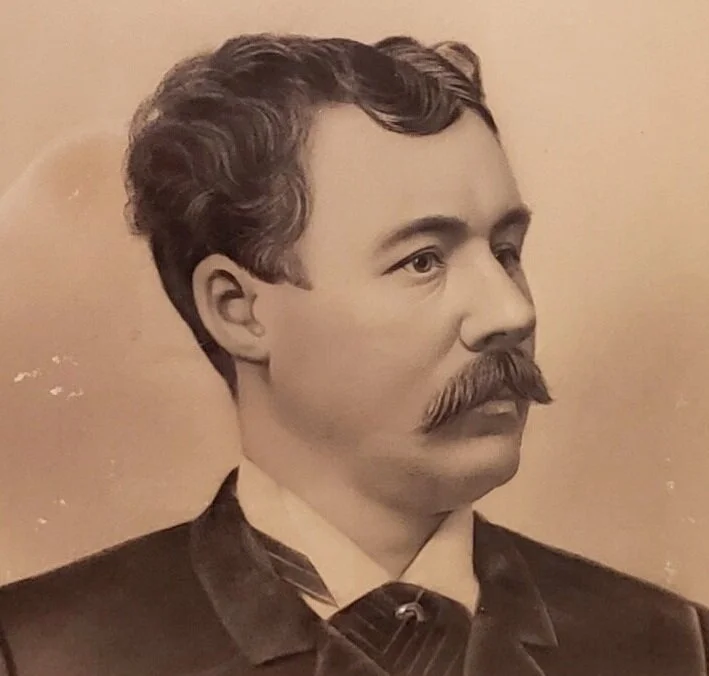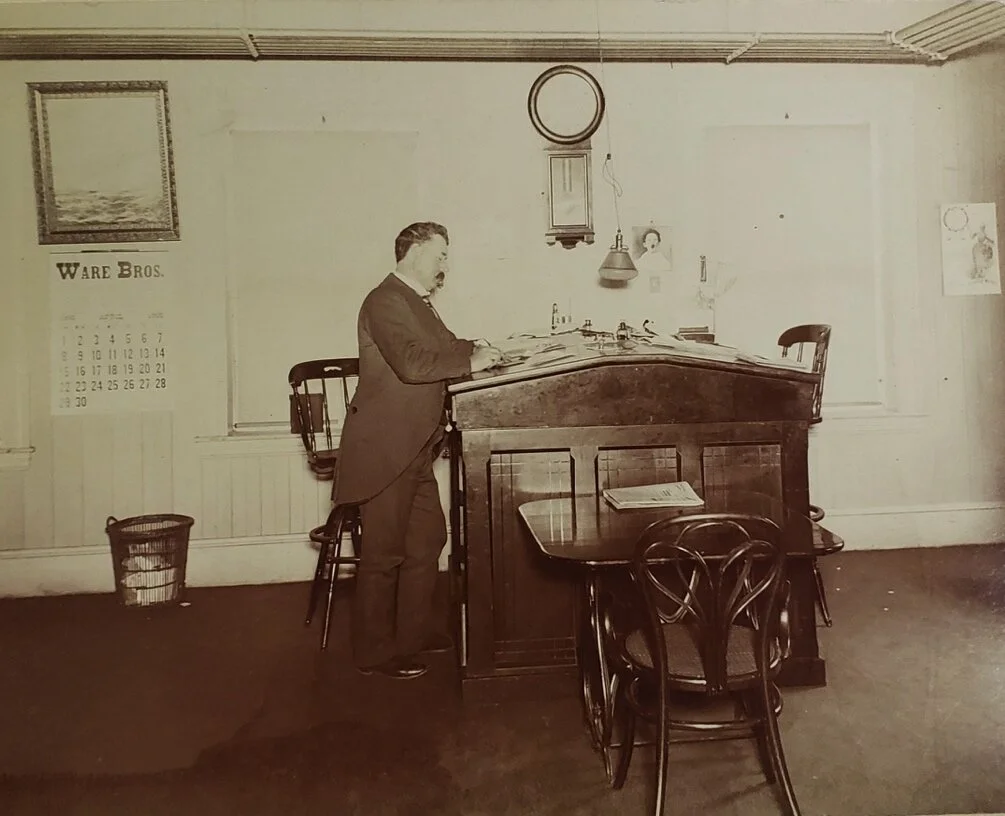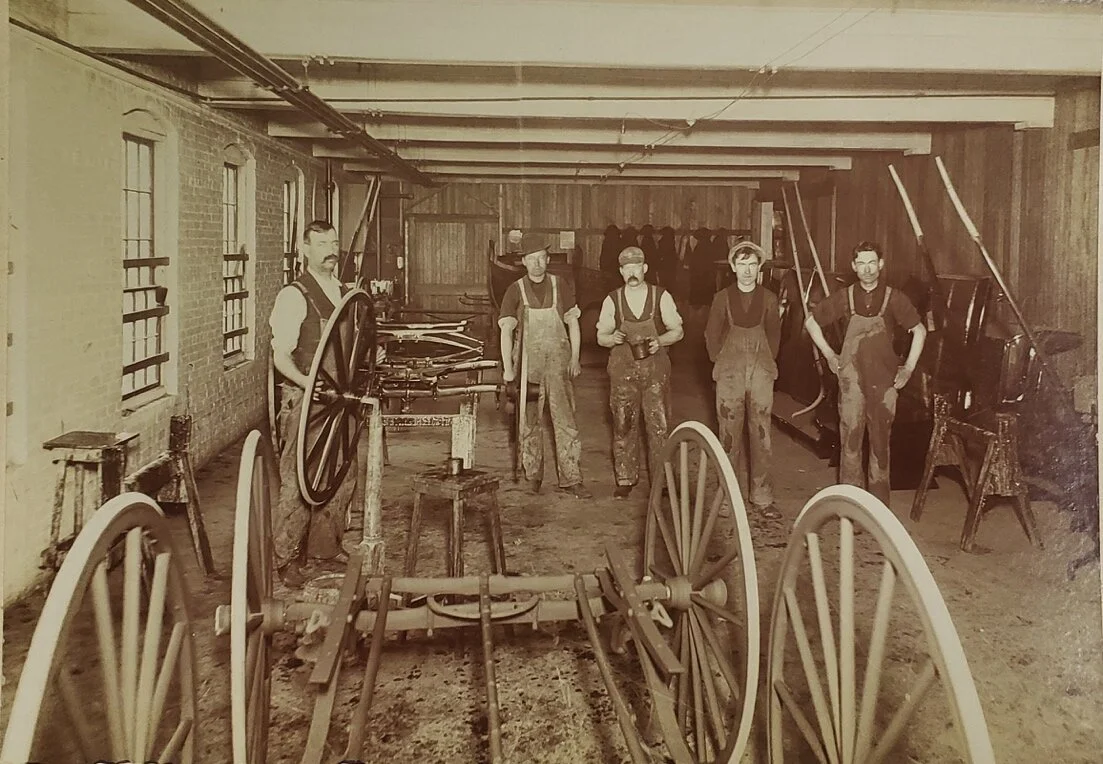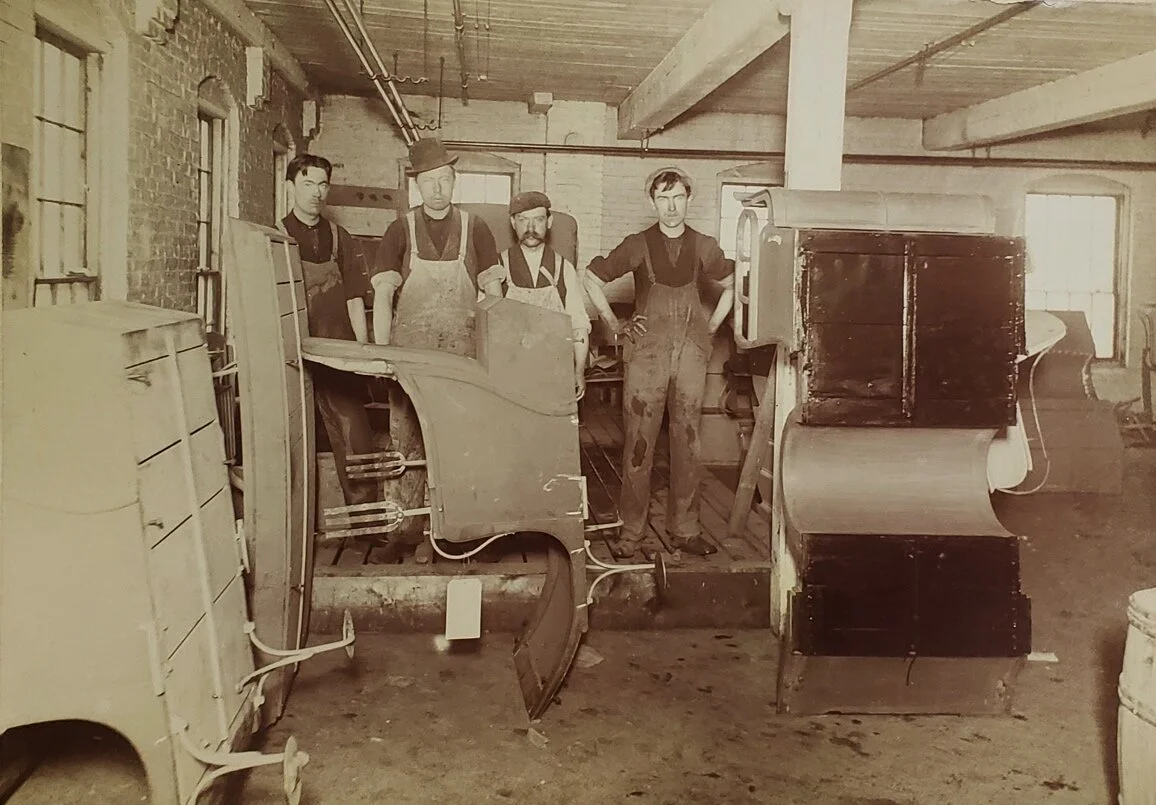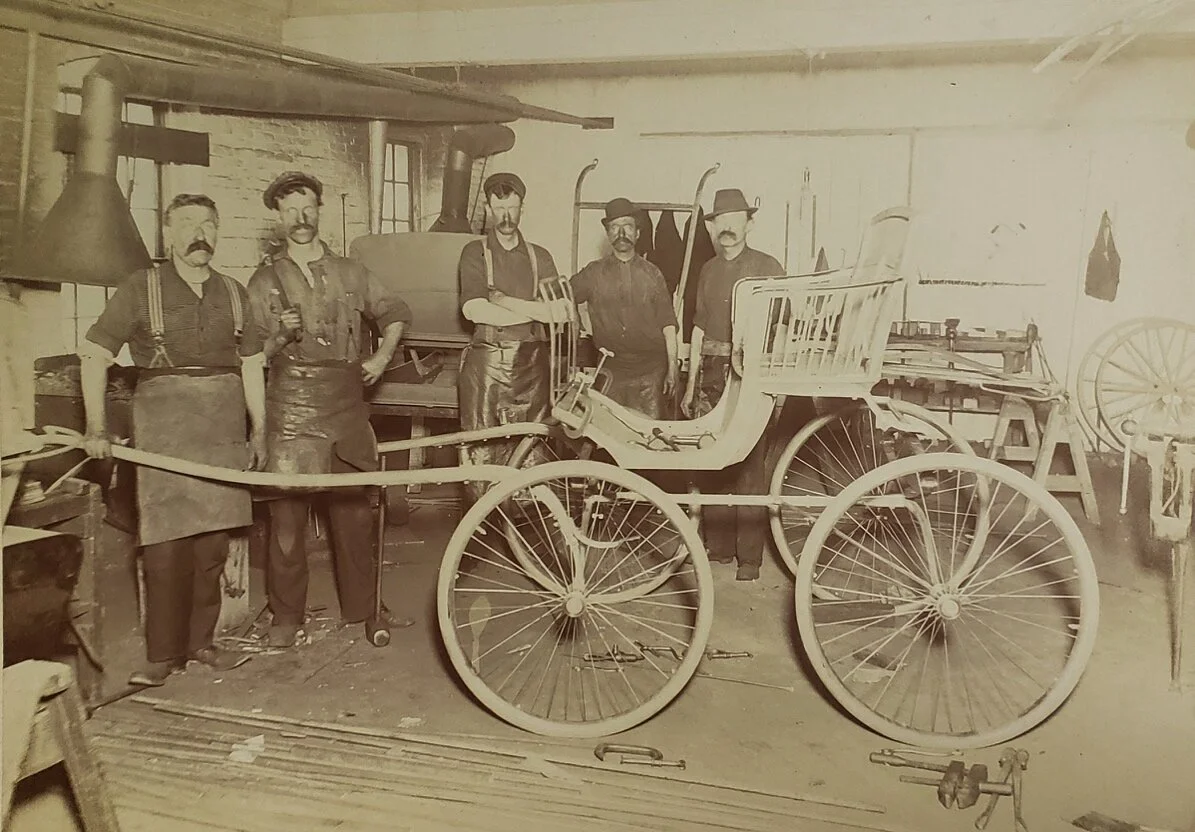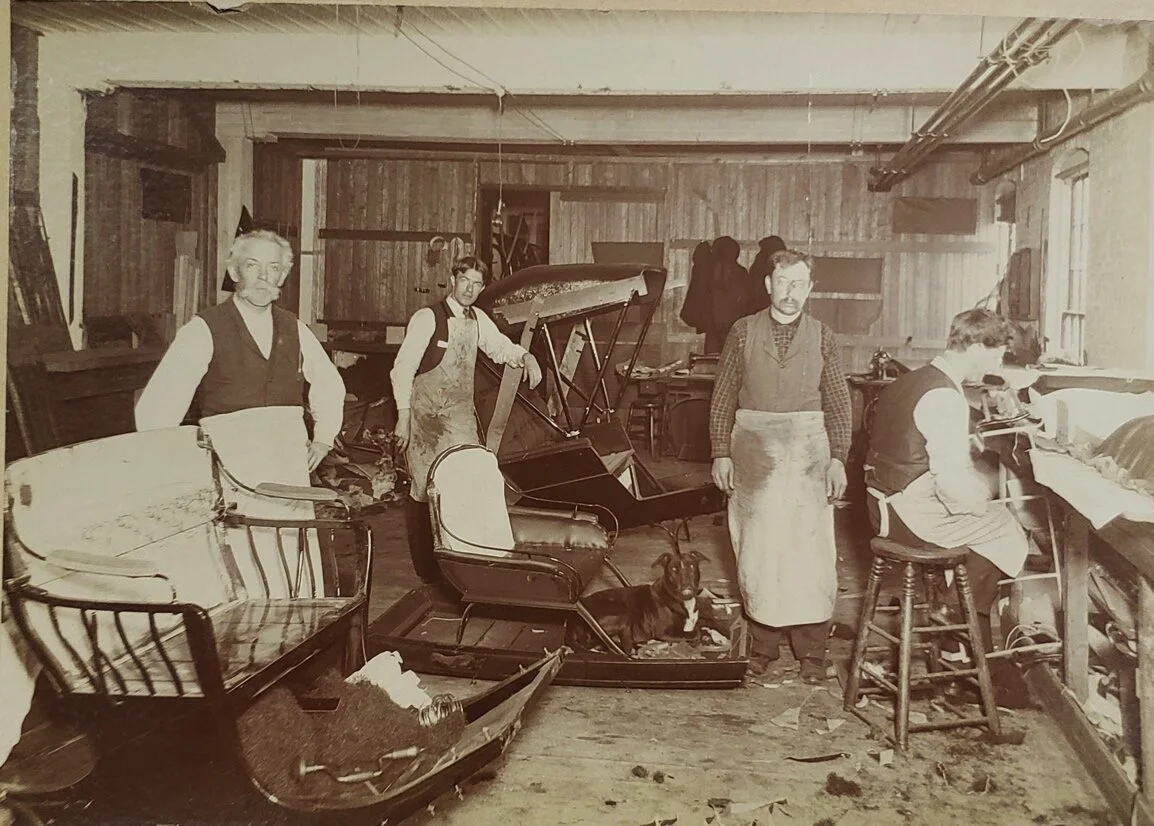Building Carriages in 1900: Views of the Connor Carriage Company
by John Mayer, Former ACM Executive Director
Research assistance by Joyann Reynolds, ACM Board Member
Editors note: The article below by John Mayer with assistance from Joyann Reynolds was originally published on the ACM website in 2019. Since then, volunteers Joyann Reynolds and Mike Harrold have completed much more research on Patrick Connor’s life and businesses. Their recent report, “Patrick Henry Connor, Amesbury Carriage Maker,” includes more details about him, his Amesbury businesses and his business associates. The report is available here.
An 1890 advertisement for the Hagan & Connor Carriage Company.
The Amesbury carriage making industry flourished for a thirty-year period from 1870 to 1900. This was the time when workers – primarily men – occupied a number of trades needed to build these vehicles. Woodworkers shaped the bodies, blacksmiths forged the iron fittings, wheelwrights made the wheels, trimmers upholstered the seats, leather workers made the tops and harnesses, and painters added the colors and decorations. Together these skilled craftsmen built Amesbury’s reputation as the center for fine carriages.
The historical records that illustrate the carriage making years in Amesbury are very meager. There are a small number of trade catalogs and publications, and newspaper articles (now on-line through the Amesbury Public Library) that provide insights about the industry.
It is a thrill when new collections of historical materials come to light. Such is the story of a group of images made in 1900 illustrating the workings of the Connor Carriage Company of Amesbury. Several of these photos are presented below.
We are grateful to descendants of the Connor family who placed these materials in the collections of the Amesbury Carriage Museum.
PATRICK CONNOR AND HIS CARRIAGE COMPANY
Patrick Henry Connor, ca. 1890.
Born in county Wicklow, Ireland, twelve-year old Patrick Henry Connor arrived in the United States in 1866. His family settled in the Salisbury / Amesbury community and set up a small grocery business on Elm Street near the center of this thriving community.
Patrick found his way into a number of occupations first in the textile industry, then as a carriage painter and eventually, in 1887, as partner in the carriage building firm Hagan & Connor. The two partners constructed a four-story factory on Railroad Avenue near Elm Street and soon became known as builders of “the finest” carriages.
A fire in February 1892 completely destroyed the factory forcing the partners to relocate. They moved operations to Carriage Avenue – an area with a large concentration of carriage builders. After several changes in locations and various partnership arrangements, in 1900 Connor became the sole proprietor of his own company – the Connor Carriage Company. His business settled into a three-story building at the corner of Morrill and Carriage (now Oakland) Avenue. This building stands today as part of CI Works and the location of Barewolf Brewery, among other businesses.
There is so much more to learn about the Connor Carriage Company and the nature of the carriage industry in Amesbury. At the same time the photos were taken, and only a block away, workers at the SR Bailey Company were engaged in a much larger operation where they built the Bailey Whalebone Roadwagon using a system of mass production. But sadly for the industry, automobile body making would take the place of carriage building in Amesbury in just a few years. At the time of these images, the Amesbury firm of Currier & Cameron was already making bodies for Stanley Steamer automobiles.
The following images were made in April 1900, about the time Patrick Connor became the proud proprietor of the Connor Carriage Company.
Patrick H. Connor in the office of the Connor Carriage Company, 1900.
Workers building the carriage frame and attaching the wheels.
In the painting area – showing the bottom of the carriage body coated with heavy paint.
A crew in the blacksmith shop are adding metal hardware to a carriage with wire wheels and pneumatic tires.
In the trimming shop where upholstery and tops are made. One of the men brought his pet to work.


